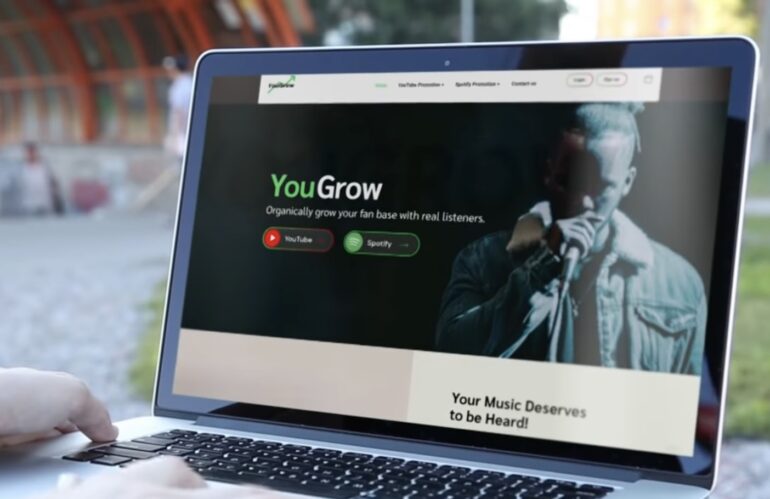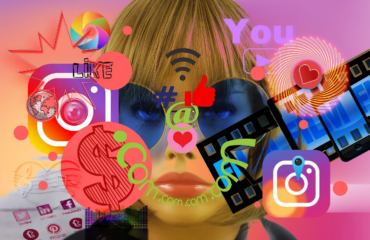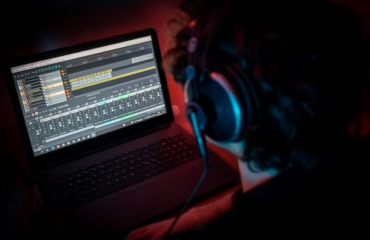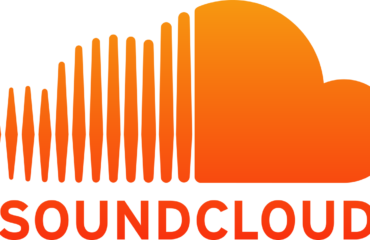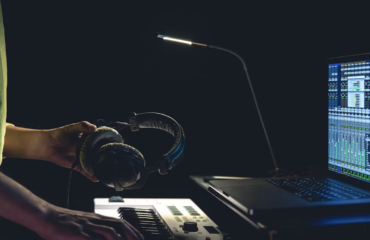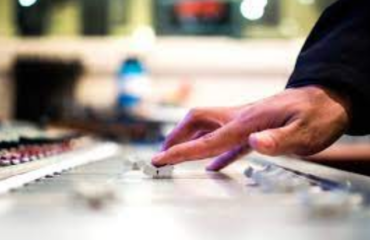Before considering uploading your original music to the prominent YouTube music promotion channels, it’s important to understand how you and other rights holders can earn royalties. These channels have a similar impact to playlists on platforms like Spotify and Apple Music. However, since most of these channels are monetized within the YouTube Partner Program (YPP), there are unique factors to consider compared to music streaming platforms.
There is a wide variety of music promotional channels on YouTube, such as Promoting Sounds, Elevator, and Trap Nation. This article focuses on the largest and most reputable YouTube music promotion channels. Regardless of your genre, you can find channels that specialize in promoting pop music, hip hop, rock, chill vibes, and even specific moods like “workout.”
In case you were unaware, YouTube is the top streaming music destination. While Apple and Spotify dominate the market in terms of revenue generation, YouTube boasts the largest user base and serves as the primary source of streams. For established artists, YouTube is more of a destination for their music rather than a starting point. However, for emerging artists, YouTube can be a vital platform for promotion.
Should you utilize YouTube music promotional channels?
For the majority of artists, the answer is yes. These channels offer similar benefits to playlists on Spotify and Apple Music. However, it’s crucial to be aware of certain concerns. For instance, why do major labels hesitate to have their music featured on these channels? Additionally, what types of scams exist within this sphere?
- One of the main advantages of utilizing YouTube music promotional channels is the ability to tap into the platform’s massive user base. With billions of monthly active users, YouTube offers unparalleled reach and engagement. Artists have the opportunity to connect with a diverse audience from around the world, breaking down geographical barriers and broadening their fanbase globally;
- Moreover, these channels often have a dedicated and passionate subscriber base that actively follows their content. By having your music featured on reputable channels with engaged audiences, you increase the likelihood of gaining new listeners and building a loyal fan community. The exposure provided by these channels can be a significant catalyst for an artist’s career, leading to increased opportunities for performances, collaborations, and music industry recognition;
- However, it’s essential to approach YouTube music promotional channels with a discerning eye. While many channels operate ethically and transparently, there are scams and deceptive practices that artists should be aware of. Some channels may exploit artists by claiming exclusive rights to their music videos or using digital submission forms that contain unfavorable terms. It’s crucial to thoroughly review any agreements or clearance forms before proceeding and, when necessary, consult with a music attorney to protect your rights.
Additionally, artists should consider their long-term goals and strategies when engaging with YouTube music promotional channels. While these channels can provide immediate exposure and short-term benefits, it’s essential to build a solid foundation for your own channel and online presence. Establishing your brand, cultivating a dedicated fanbase, and driving traffic to your official channel should be integral parts of your overall marketing and promotion strategy. The goal is to use these promotional channels as a stepping stone to grow your own platform and have more control over your content and revenue streams in the long run.
So YouTube music promotional channels offer valuable opportunities for artists to gain exposure and reach a wide audience. They can be a powerful tool in an artist’s promotional arsenal, allowing them to connect with fans and industry professionals alike. However, it’s crucial to approach these channels with caution, being mindful of potential scams and protecting your rights as an artist. By strategically utilizing these channels and simultaneously building your own platform, you can maximize your chances of success in the ever-evolving landscape of the music industry.
Top 10 YouTube Channels for Promoting Music
- YouGrow Promo: YouGrow Promo is a popular YouTube music promotion channel that specializes in helping artists and musicians grow their fanbase. They offer a range of promotional services, including video features, social media promotion, and targeted advertising campaigns;
- Daimoon Media: Daimoon Media is a YouTube music promotional channel known for its high-quality visual content and strategic promotion strategies. They work closely with artists to create engaging music videos and provide effective promotion to increase exposure and reach;
- Planetary Group: Planetary Group is a renowned music promotion agency that also operates a YouTube channel dedicated to showcasing talented artists. They curate playlists, feature music videos, and promote emerging artists across various genres, helping them gain visibility and reach a wider audience;
- Media Mister: Media Mister offers comprehensive social media promotion services, including YouTube music promotion. Their YouTube channel focuses on promoting music videos, helping artists gain exposure, and boosting their online presence through targeted marketing campaigns.
- GetAFollower: GetAFollower is a platform that provides social media promotion services, including YouTube music promotion. They specialize in increasing followers, views, and engagement for music videos, helping artists gain credibility and attract a larger audience;
- Promolta: Promolta is a leading YouTube music promotion platform that helps artists promote their music videos to a wider audience. They use targeted advertising and strategic promotion techniques to increase views, engagement, and overall visibility for artists on YouTube;
- Promosoundgroup: Promosoundgroup is a YouTube music promotion channel that supports independent artists by featuring their music and music videos. They curate playlists and offer promotional opportunities to help artists gain recognition and grow their fanbase;
- Fiverr: Fiverr is a popular online marketplace that offers a wide range of services, including YouTube music promotion. Artists can find freelancers on Fiverr who specialize in promoting music videos, creating promotional content, and implementing effective marketing strategies;
- Juss: Juss is a YouTube music promotion channel dedicated to showcasing talented artists and helping them gain exposure. They feature a diverse range of music genres and provide a platform for artists to reach new audiences and connect with music enthusiasts;
- Russ: Russ is a YouTube music promotion channel that focuses on promoting independent artists and their music videos. They offer exposure to a wide audience, helping artists increase their visibility and gain recognition within the music industry.
Whose video is being used?
The majority of these channels create their own video content, which they own, while allowing the artist to monetize the audio. Often, their videos consist of visualizers, photos, or slideshows, rarely reaching the level of high-production music videos.
- However, some channels feature official music videos that boast high production value. Many musicians mistakenly give these channels exclusive rights to their music videos, which is unfair considering that the artists themselves paid for and own the music synchronized to the video;
- Sometimes, a YouTube video premiere can result in a loss of rights. Artists should be cautious of a scam where channels trick them into premiering their official music videos, subsequently acquiring exclusive rights to the content. While sometimes unintentional, these channels are aware that they can earn money through YouTube;
- In cases where premieres occur on channels that intend to monetize videos within the YouTube Partner Program, artists are unable to upload the same video on their own channel or run Google Ads or YouTube ads on it.
Digital submission forms should be approached with caution, as they often raise red flags. It is advisable to avoid submitting through forms that contain legal language. Instead, artists should negotiate all contracts in writing and sign them manually. Digital forms are often indicative of potential scams, as they may include hidden clauses that are unfavorable to the artist.
Copyright-free music
Another common scam found in these forms involves channels attempting to use an artist’s music copyright-free and grant others the rights to use the music freely in their videos. To ensure transparency and proper clearance or licensing procedures, submissions should be handled through email, creating a paper trail. It’s important to note that the focus of this discussion revolves around getting the audio featured on these channels, rather than the music video itself.
These gratis sync licenses allow channels to use an artist’s music and retain the earnings from video views. While this arrangement has its benefits, as it offers promotional exposure to a larger audience, artists still retain ownership of the audio, and the channel only monetizes the audio within the video. As long as the channel does not prevent artists from making money through their own channel’s videos or hinder collaborations with other channels, this arrangement can be acceptable. Additionally, artists should ensure that their music is not given away as “copyright-free” to other content creators.
It is not the intention to scare artists away from these channels but rather to protect them from potential exploitation. While major labels and artists tend to avoid partnering with these channels, it is not primarily due to rights or licensing concerns. Instead, major labels prefer to use their own agreements to safeguard their interests.
The majors refrain from utilizing these channels for a different reason altogether—they possess unwavering confidence in their artists’ eventual rise to popularity through alternative means. By doing so, they aim to evade a situation where an artist gains immense popularity from a different source, such as radio, social media, or elsewhere. Consider a scenario where an entirely different song by the same artist goes viral and accumulates 100 million views. Naturally, this sudden surge in popularity would prompt viewers to seek out the artist’s other videos, rapidly increasing their view count from hundreds of thousands to millions. The majors are wary of sharing the resulting revenue with third parties.
Is there a downside to using YouTube music channels?
For newcomers seeking to establish a fanbase, there are few drawbacks, unless they fall victim to rights infringement or unknowingly sign exclusive agreements. However, more established artists face concerns regarding divided views and the competition between multiple channels vying for exposure. At times, these channels’ videos may rank higher in search results for the artist’s name than their own official channel’s content, hampering the intended discovery of their channel and official video. While these music channels showcase an artist’s video for a week, the artist themselves continue promoting their work indefinitely.
- Approaching YouTube music promotional channels requires meticulous research and organization. Artists should compile a spreadsheet containing contact details of channels that align well with their music. Submitting to all ten channels mentioned is ill-advised due to the broad range of genres they cater to. It is also advisable to include smaller channels in the spreadsheet;
- To obtain contact information, artists can visit the about tab on a channel’s page, where they often find the email address listed towards the bottom. Although not a universal practice, some channels provide digital forms in the description. However, it is generally wise to exercise caution with such forms. If the channel includes legal language, it is preferable to initially submit or inquire via email;
- When it comes to dealing with contracts or clearance forms, seeking the guidance of a music or entertainment attorney is crucial. In cases where an artist wishes to work with a channel but disagrees with certain aspects of the agreement, a non-confrontational approach known as “redlining” can be employed. By crossing out objectionable clauses and signing the document, the artist politely communicates their reservations while expressing a desire to collaborate.
In the event that a channel insists on exclusivity for the artist’s official music video, the artist can negotiate a limited exclusivity period of three months. This allows them to freely promote their own version on their channel once the exclusivity period expires.
To conclude
When submitting music to YouTube music channels, it is essential to keep the communication simple and concise. Express admiration for the channel, explain why the music is a good fit, and provide a link to the song. The key is to be brief since channel administrators receive numerous submissions and prefer to watch and listen, making quick decisions. Maintaining a friendly demeanor is crucial, as the aim is to establish a mutually beneficial partnership and long-lasting relationship that extends to future releases.
If a song submission is rejected, artists should not be disheartened. They can explore alternative options, such as booking a YouTube TrueView ad to have their video played before all videos on the channel, thereby reaching a broader audience. Sometimes, this approach can even result in greater exposure to the channel’s viewership.
